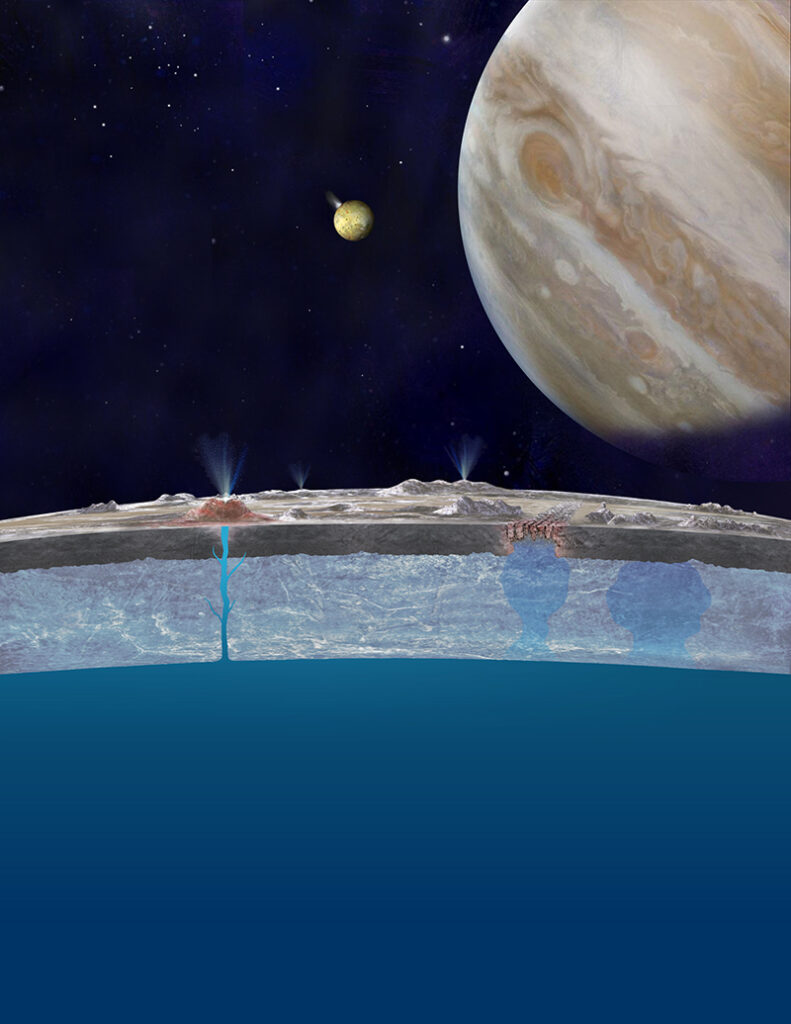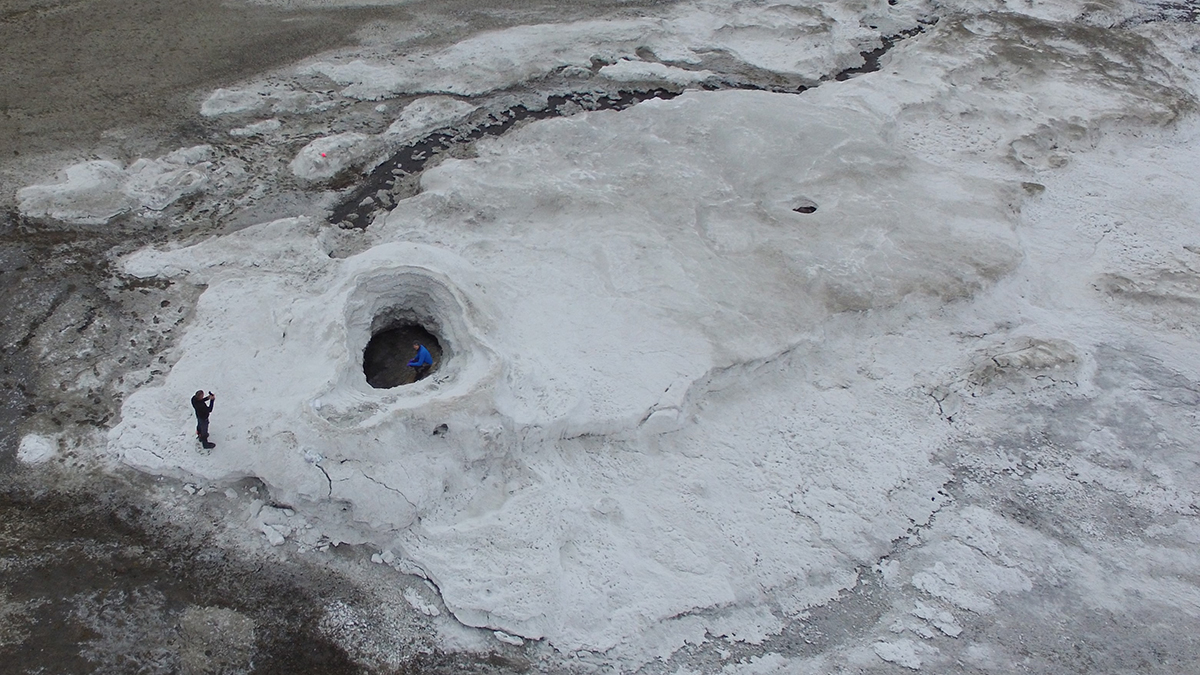Jupiter’s moon Europa is often lauded as one of the most promising destinations in the search for life in the solar system. Its global subsurface ocean, filled with mineral-rich salts and shielded from harmful irradiation by an icy shell, means microbial life could possibly flourish in the watery depths. Europa will be visited by two upcoming missions, Europa Clipper from NASA and Jupiter Icy Moons Explorer (JUICE) from the European Space Agency, both of which seek to pinpoint areas where future landers might search for life.
But any hypothesized life would be hidden within the ice-capped ocean and shielded from view. So how, then, could these spacecraft possibly find signs of life? New research found that if a geyser or other cryovolcanic feature brings ocean water up to the surface, any microbes within that water could be preserved as the water freezes on the surface. The organics could then precipitate out with the salts and minerals and be detectable by passing spacecraft.
From the Arctic to Europa
Planetary scientists still actively debate whether cryovolcanism—in which cold liquids underground migrate to the surface of a planetary body and freeze—exists on Europa. Some images from the Galileo spacecraft in the 1990s discovered strangely smooth patches of the moon’s surface that suggest freshly deposited material, and Hubble Space Telescope images from a few years ago hint at geyser-like plumes (although nothing as dramatic as those on Enceladus). Scientists also speculate that cracks in Europa’s icy shell could let some ocean water escape to the surface through fissures, like mid-ocean ridges on Earth.

Any salty ocean water that reaches Europa’s surface would almost instantly freeze. What would that do to biosignatures of microbial life? Past experiments have shown that when silica-rich hydrothermal fluids freeze, the minerals that the freezing process creates can trap microorganisms within. Salts, too, can capture organics within their lattice. Those organics then precipitate out of the frozen liquid, after which scientists can detect them. But could this process work with the types of salts that are common on Europa?
Researchers went to the Canadian Arctic to find out. In 2017, they collected samples from the hypersaline Lost Hammer spring on Axel Heiberg Island. “The Lost Hammer spring is very unique as it is anoxic, has below-zero temperatures, and [has] extremely high concentrations of sulfate and chloride—supersalty and extreme conditions,” said lead researcher Arola Moreras Marti, an astrobiologist at the University of St Andrews in the United Kingdom. The spring’s salt deposits are made of “hydrated sodium sulfate and chloride, and they showed similar composition and also absorption features as Europa’s nonicy materials measured by the Galileo spacecraft.”
That makes Lost Hammer a great place to test what would happen to microbial life caught in a cryovolcanic eruption on Europa. The researchers tested 18 salt deposit samples from the spring by heating them and using a mass spectrometer to study the resulting gas—similar to what could be done by a lander. They also analyzed lipid biomarkers, measuring how much and which types of organic lipids they could detect within the salt deposits.
“The organic biomarker results…indicate the organics are mainly of microbial origin,” Moreras Marti said. Further analysis showed “that these organics are trapped inside the sulfate salts. This is particularly interesting, as the salts could protect the organics from oxidation, allowing for a better preservation [on Europa].” Moreras Marti presented these preliminary results at the 2022 Lunar and Planetary Science Conference on 8 March.
What’s in a Map
“We can so far say that sulfate salts might be a good target to look for organics.”
“I certainly find the idea intriguing,” said Michael Brown, a planetary scientist at the California Institute of Technology in Pasadena. “Europa has several (at least) major different regions of surface composition, and trying to tease out which of these would be the best for preserving organic signatures is going to be quite important for understanding where to, eventually, land on Europa. I think their overall hypothesis—that crystallizing salts can capture and perhaps preserve organics—could be an important insight worth pursuing further.” Brown was not involved with this research.
“These results from Lost Hammer will inform both future missions Europa Clipper and JUICE about how organic biomarkers are preserved in nonicy materials that have similar mineralogy to Europa’s surface,” Moreras Marti said. Both missions seek to map the composition of Europa’s surface, and results like these will help scientists interpret the maps and pinpoint areas more likely to contain evidence of life. Future Europa lander missions could then explore those areas. “We can so far say that sulfate salts might be a good target to look for organics.”
—Kimberly M. S. Cartier (@AstroKimCartier), Staff Writer

